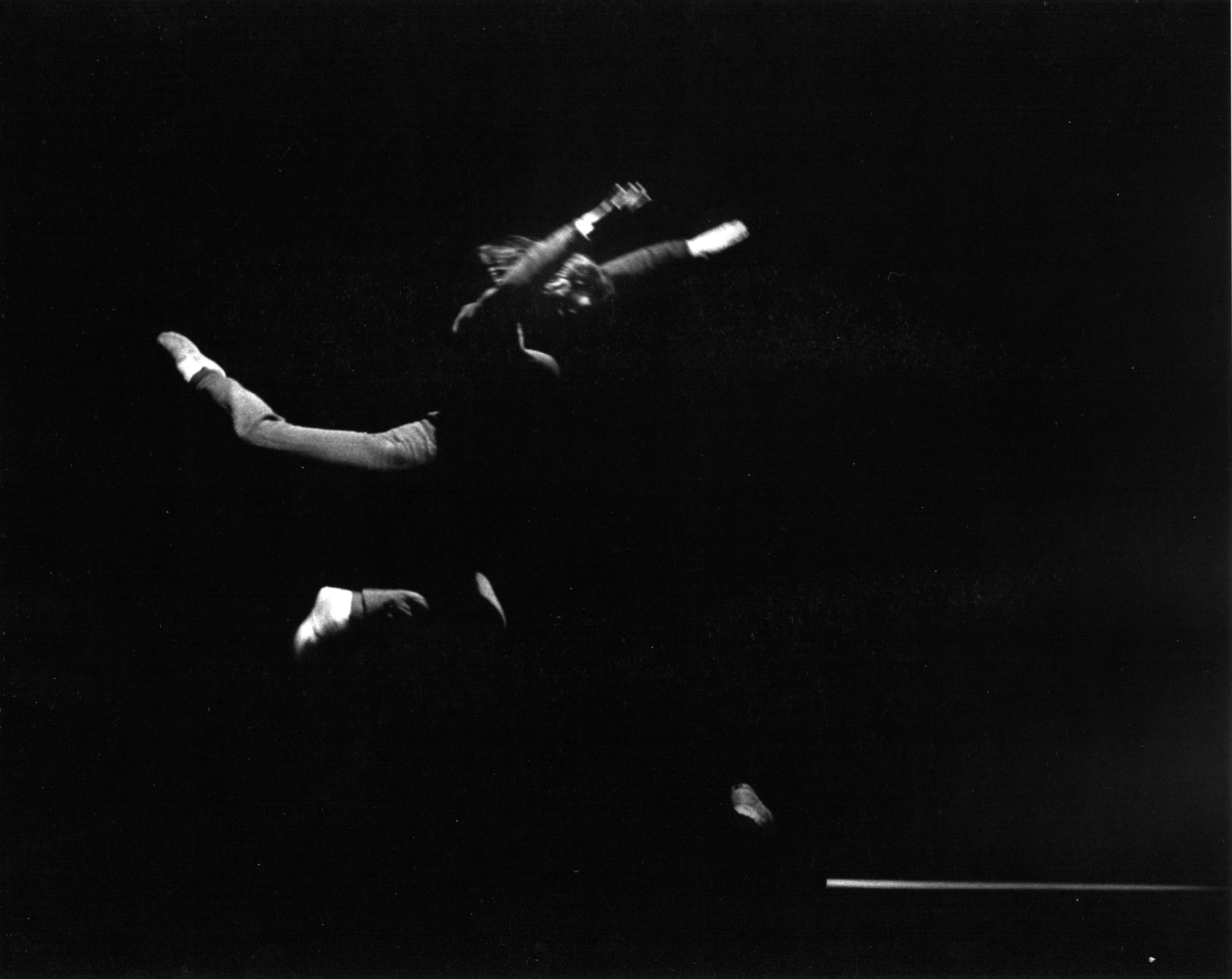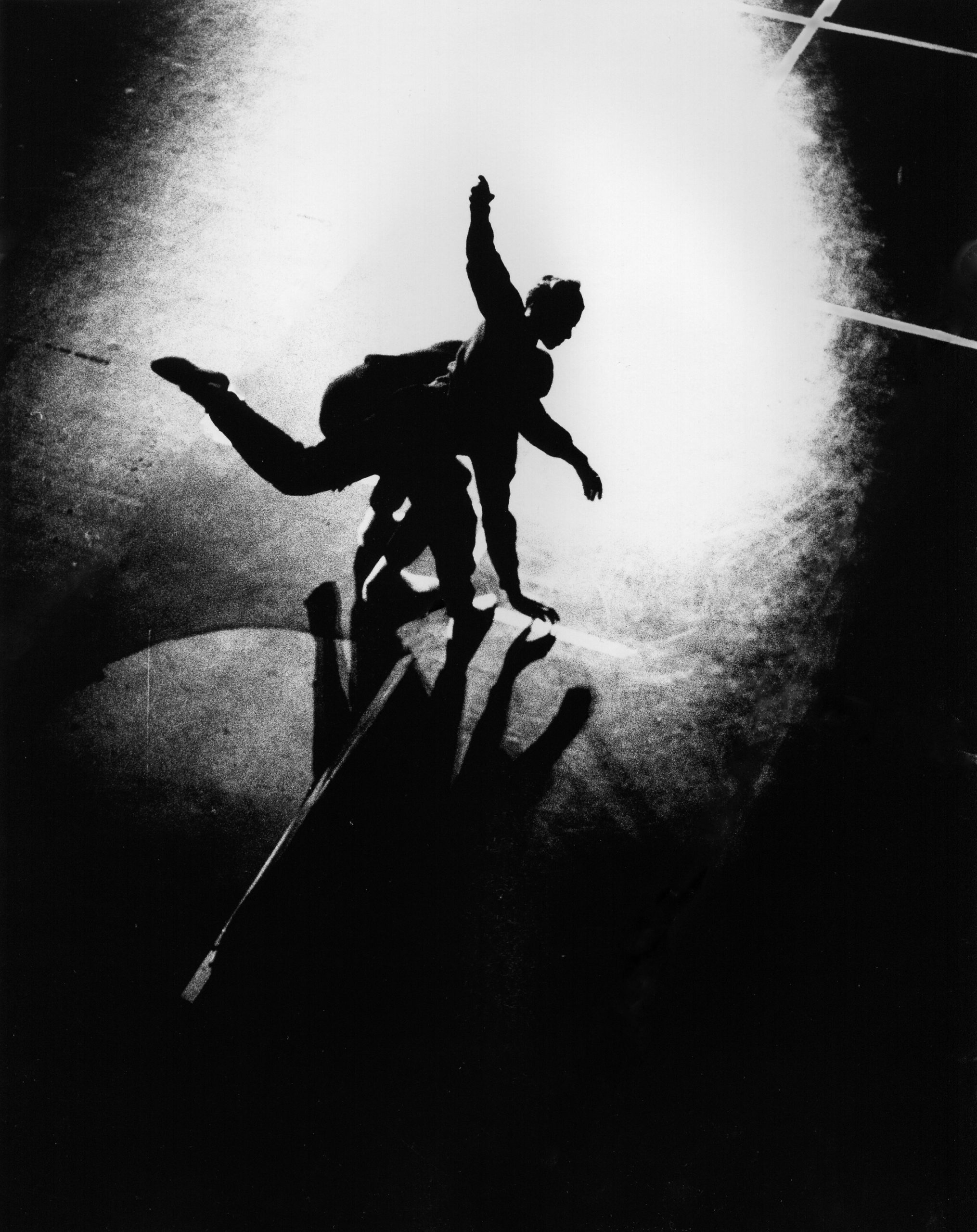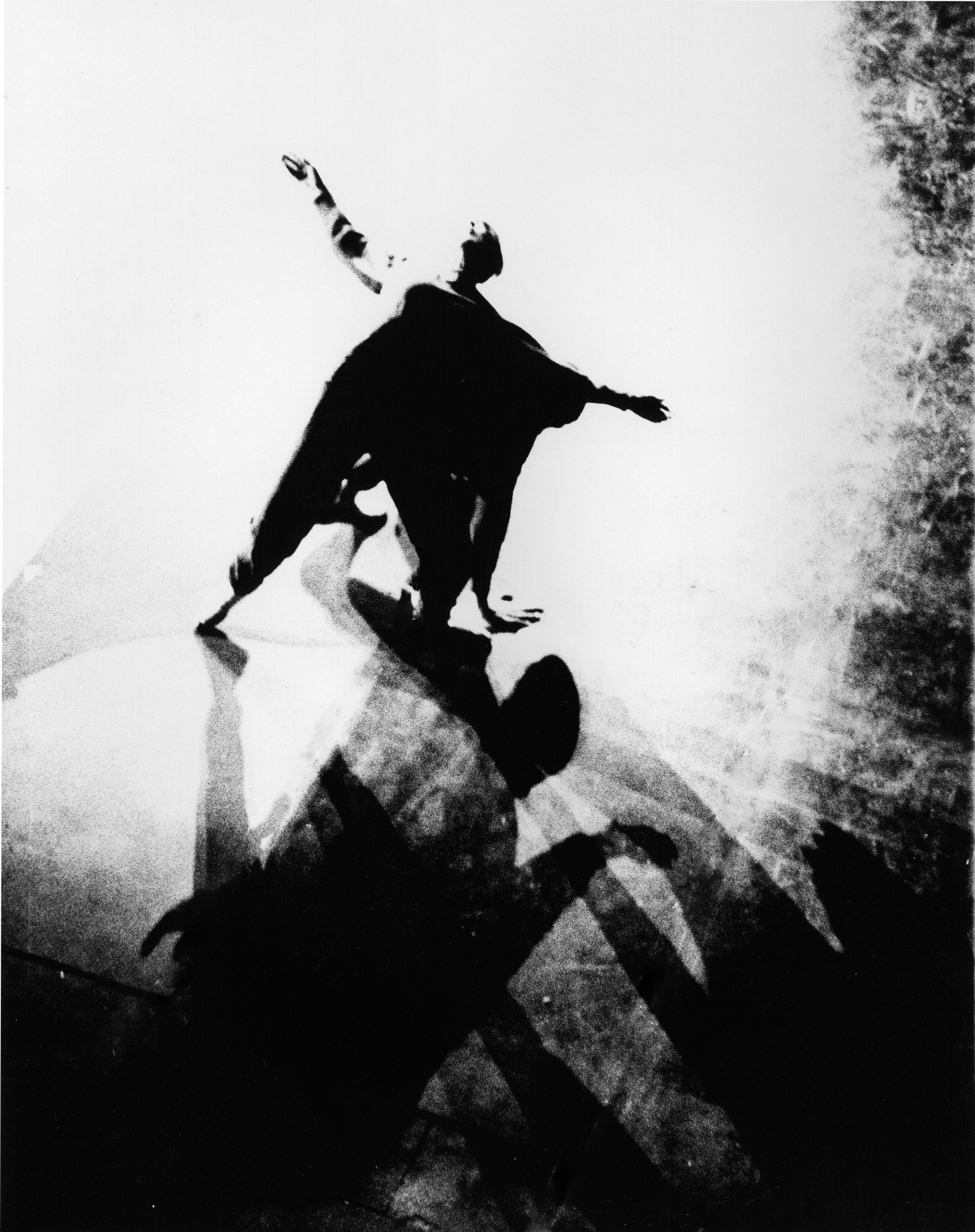


Photos by James Klosty. Courtesy of the Merce Cunningham Trust.
Merce Cunningham thought the light for his dances should be “like Day” but when he made Winterbranch, Robert Rauschenberg suggested that instead it should be “like Night”. Not romantic blue green moonlight but modern Night. Darkness with spots of electric light; a parking lot cold white light a long way away, the sweep of headlights from cars on the highway, the suddenness of the lights from stores as one drives by. I never discussed these ideas directly with Bob but was told by Merce (and the dancers) what he had done. It was always improvised during the performance. There was never a rehearsal. Scenically the stage was naked: no drapes, no wings, no cyclorama. The view was a completely open stage with all the equipment exposed at the sides, the back and overhead. The rear of the stage would show whatever had been stashed back there. Bob and his assistant would place lights strategically to reveal or streak across the mechanics. If there was old scenery, we should only see it’s back so there was minimum of color and imagery. Piles of chairs, old equipment, fire extinguishers; all great. Additionally, Bob made a ‘Monster’ in each place out of whatever he found. (see below in the Concepts document.)
The dancers wear dark navy-blue sweatshirts and sweatpants and a black smudge on their cheeks like football players. The choreography has lots of falls and drags and leaps. It was not improvised but very completely set choreographically. The dance is precisely 20 minutes long. The first 9 minutes is in silence. The music, on tape, is Two Sounds, by La Monte Young. It starts on minute 9 and the second part comes on 30 seconds later. The first Sound is a low tone created by a metal stool with a contact microphone attached being dragged across a wooden floor. The second Sound was picked up by a contact microphone attached to a tin can with raw edges being dragged across glass. These Two Sounds are loud and continue without modulation until the end of the piece.
One is tempted given the sound and the random nature of the lighting to be somewhat horrified, but the piece is not intended to be an assault on the audience even though musically it can have that effect. Their discomfort in the lighting is really caused by their unconscious expectation that they should see everything clearly, that they assume they will be able to follow the thread or the narrative of the choreography, as if that is the only important thing there. It is their expectation…their entitlement… which causes their reaction.
WINTERBRANCH: CONCEPTS
Lighting designed by Robert Rauschenberg/Beverly Emmons
How to accomplish the apparently random and dark lighting in a way that is safe for the dancers.
Cue List 2 is created in advance in the cue writing tech. The location of when the cues are called are set at times determined by a stopwatch and selected at random, without regard to any particular action in the choreography. These cues are memorized to be executed by a console capable of operating two Cue Lists at the same time.
Cue List 1 is accomplished during the dress run by improvised action as described below. The console remembers this List as it is created. The ballet is performed with both lists running simultaneously. The stage is naked; there are no wings/legs, borders or drops.
The dancers experience the dimness and the sharp shocks for the first time only at this dress rehearsal; the lighting for the performances at this venue will be the same each night. They will be able to make an accommodation at the same time that the audience experiences the sense of improvisation and randomness.
It is very important that the locations of the cues and lighting actions that happen be different in each venue. The abruptness and darkness can be seen in the dancers’ bodies as they react to the light; they should be safe but not comfortable.
Cue List 2:
- The ‘underwear’ of the lighting:
- Soft dim wide “worklights”
- Edgeless. Asymmetric. one source, one shadow
- A flood light in the Grid that throws the whole equipment hang over the stage into shadows. Have someone move it slowly when it comes on
- Off stage find and use the real worklites/ hall lights/ shop lights (no blue running lights) Rail lights
- Oblique shots across interesting mechanical things stored on the backwall (no scenery or color)
- There should be 2 or 3 moments of absolute blackness, each no more than 10 seconds long except for the Monster passage..see below
Cue List 1:
- Shock, sharp, abrupt and bright
- Can be improvised during the run thru either by looking or not looking at the stage. Memorized by the console as it occurs
- These circuits from which the improvised choices can be made are:
- Single sources from booms, low sides – streaks
- Bright boom lights as shafts
- Streaks and shafts from overhead but nothing should have a spotlight round shape or gobo.
- Also, some of the lights described in List 2 can also be used in List 1
Additional Onstage Action:
- Handheld flashlights with stagehands who don’t know the piece. “light anything that interests you”
- ‘Auto headlights’ made by 2 narrow beam PAR cans attached to either side of a sawhorse. They are set out of sightlines off stage. When they come on in List 1 or 2 a stagehand turns it, sweeping the beams of light across the stage like a car making a turn.
- Switching on and off the identified local worklites, corridor lights, etc. This may have to be included in stage management calls on wireless headsets.
The Monster:
This is a pile of misc. chairs, debris from around the theatre, mounted in a pile on a rolling dolly, partly obscured with a dragging tarpaulin. It has 2 lights, a ‘headlight’ pointing out the front with a revolving roof light, red or blue, like an emergency vehicle and then some other light source inside the pile. This is dragged, in blackness with an unseen rope, from Up Left to Down Right in the 18th minute of the piece. This is the only time when the stage must be in blackness.
The flashlights, these 2 ‘Monster’ lights and the tarpaulins are the only things that travel with the company; everything else is discovered in each venue.
See the Cue List for an example of the cueing.
